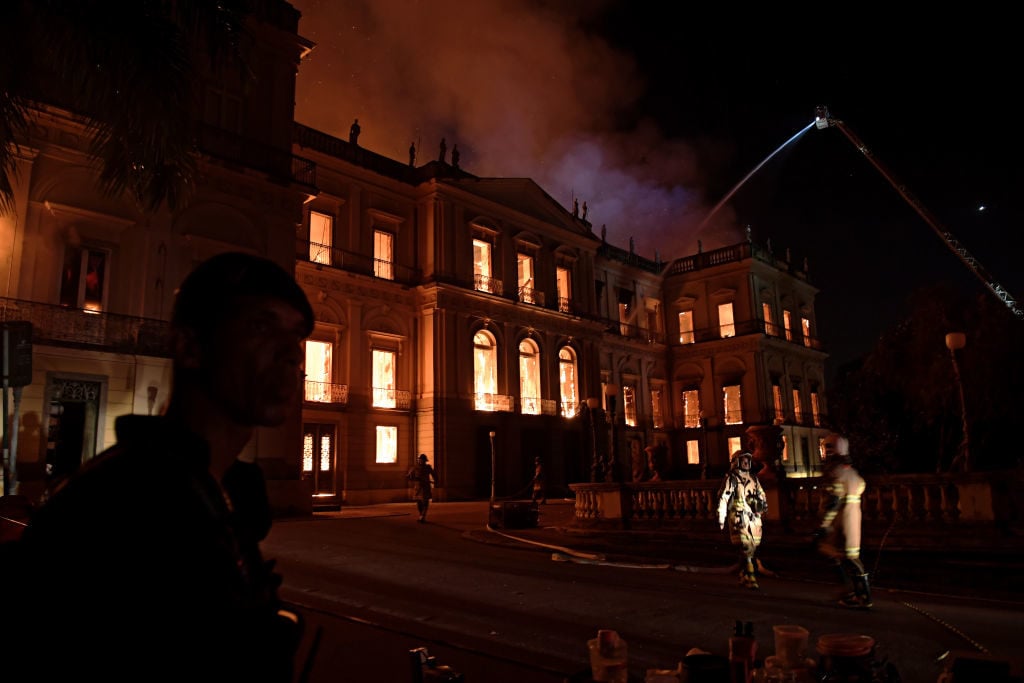Art World
Millions of Artifacts Feared Destroyed as Fire Engulfs the National Museum of Brazil
The 200-year-old museum, which is the oldest scientific institution in Brazil, had been underfunded for years.

The 200-year-old museum, which is the oldest scientific institution in Brazil, had been underfunded for years.

Kate Brown

A fire ripped through the 200-year-old National Museum of Brazil in Rio de Janeiro, home to a vast collection of ancient artifacts from South America and around the world. The fire began after the museum closed to the public, around 7:30PM on Sunday evening. Hours later, firefighters were still working to control the fire on all floors of the historic building. The cause of the fire is has yet to be determined, and there are no known casualties.
The building and collection of more than 20 million artifacts is severely damaged, but just how devastating the destruction of its collection really is has yet to be confirmed. Originally the Royal Museum, which was founded in 1818 when Brazil was ruled by Portugal, it is the oldest scientific institution in the country and the largest natural history museum in Latin America. The museum is home to Egyptian and Greco-Roman artifacts, as well as “Luzia”, a 12,000 year-old skeleton that was the oldest in the Americas. The institution also housed important dinosaurs fossils and a meteorite found in 1784. Its size and stature was comparable to Chicago’s Field Museum, and Brazil’s President Michel Temer has called the fire’s destruction an “incalculable loss for Brazil.”
The museum in the Quinta da Boa Vista park had been underfunded for years and had fallen into disrepair because of it. In response to the fire, prominent Brazilian art curator called the government out for its “negligence,” and many Brazilian Twitter users were criticizing the government’s massive funding of the Olympics in 2016 and the FIFA World Cup in 2014, in comparison to the sparse support past and current governments have shown for the institution.
The Brazilian artist Vik Muniz wrote on Instagram of his shock, and also the “great shame and sadness… in which we trust the custody of our history.”
Luiz Duarte, a vice-president of the museum, told local news that they had recently made a deal with the government’s development bank, BNDES for new funding, 21.7 million reais ($5.35 million). A portion of that money was due to be made available after the national presidential election this October. The packaged deal including a fire prevention project.
“It is an unbearable catastrophe. It is 200 years of this country’s heritage,” Duarte told TV Globo. “It is 200 years of memory. It is 200 years of science. It is 200 years of culture, of education.”